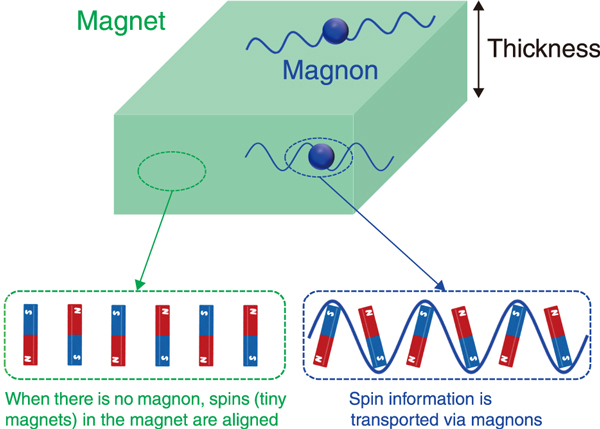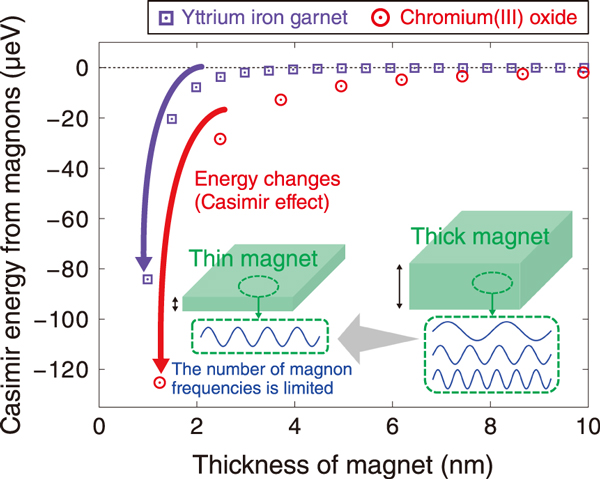
Fig.1 Schematic picture of magnons inside magnets

Fig.2 Energy generation predicted by theoretical calculations in this study
In the modern information society, to further miniaturize and lighten devices using magnets, it is important to investigate how the properties of magnets, such as the magnetic strength and information transmission efficiency, change when magnets are extremely small. As shown in Fig.1, magnons are particles that propagate inside a magnet as waves and carry spin information (i.e., information on the S or N pole). Hence, they are expected to have applications in the field of spintronics.
In this research, we theoretically investigated how the energy inside a magnet changes as the magnet becomes thinner. We examined two types of magnets, yttrium-iron-garnet and chromium(III) oxide. As shown in Fig.2, the energy changes when the magnet is thinned down to a few nanometers.
This phenomenon is attributed to a previously unknown property of magnons, which plays a crucial role in the microscopic world inside magnets. In general, magnons can be counted as “1, 2, 3,...” Intuitively, if no magnon is present, no effect is observed. However, an effect in the microscopic world leads to the production of energy even when in the absence of a particle. In fact, a magnet is always filled with the energy produced by such “zero number of magnons,” and our discovery implies that this energy is modified when the magnet is made extremely thin.
This phenomenon is a magnonic analog of the well-known Casimir effect in physics and nanophotonics. The original Casimir effect was predicted theoretically in 1948 and was observed experimentally about 50 years later. When two metal plates are placed in vacuum at a small distance from each other, an internal pressure is generated by photons, and the plates are attracted to each other. Similarly, in our study, the pressure inside the magnet is modified by the Casimir effect and changes various properties of the magnet. For the yttrium-iron-garnet magnet, the Casimir effect changes the strength of the magnet. On the other hand, the Casimir effect in the chromium(III) oxide magnet does not change the strength of magnet. These findings will be useful for controlling the strength of thinner magnets.
This study is still in the stage of theoretical calculations, and experimental verification is required. In the future, it is expected that they will serve as the basic principle to open the field of Casimir engineering in which the Casimir effect of magnons is controlled and applied to engineering.
(Kei Suzuki)
<Previous: 3-6 | Next: 4 Nuclear Science and Engineering Research>